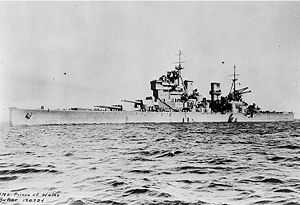British re-armament

In British history re-armament covers the period between 1934 and 1939, when a substantial programme of re-arming the nation was undertaken.
After World War I, dubbed "the war to end all wars", Britain (along with many other nations) had wound down its military capability. The Ten Year Rule said that a "great war" was not expected in the next ten years; this policy was abandoned in 1932.
Germany was not considered a threat during the 1920s, but the situation changed radically when Adolf Hitler came to power in 1933 and withdrew Germany from the League of Nations and the Geneva Disarmament conference.
In October 1933, when the failure of the Disarmament Conference was evident, a Defence Requirements Sub-Committee of the Committee of Imperial Defence was appointed to examine the worst deficiencies of the armed forces. The group first considered the Far East, but soon looked at dangers nearer home.[1]
Even in the mid-1930s the Royal Air Force's front-line fighters were biplanes, little different from those employed in World War I. The Re-Armament Programme enabled the RAF to acquire modern monoplanes, like the Hawker Hurricane and Supermarine Spitfire, such that sufficient numbers were available to defend the UK in the Battle of Britain in 1940, during the early stages of World War II.
Re-armament also led to the Royal Navy acquiring five new battleships of the King George V class, and modernising existing battleships to varying extents. Whereas ships such as HMS Renown and HMS Warspite were completely modernised, others such as HMS Hood, the Nelson class, the Royal Sovereign class, HMS Barham, and HMS Repulse were largely unmodernised - lacking improvements to horizontal armour, large command towers and new machinery.
Equally importantly, aircraft carriers of the Illustrious class and a series of large cruiser classes were ordered and expedited.
The British Army was supplied with modern tanks and weapons e.g. howitzers, and the Royal Ordnance Factories were equipped to produce munitions on a large scale.
Government-backed "Shadow Factories", generally privately owned but subsidised by the government, were established to increase the capacity of private industry; some were also built by the government. Similarly Agency Factories supplemented the Royal Ordnance Factories.
See also
References
- ↑ James, Robert Rhodes (1970). Churchill: A Study in Failure, 1900-1939. London: Weidenfeld and Nicholson. p. 226. ISBN 978-0-297-17944-3.